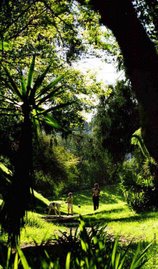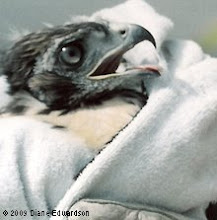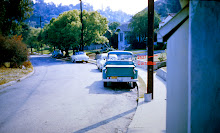Vandiveer said, "It was walking across the middle of the Red Car Property when I spotted it. I thought 'Wow that’s a huge housecat!' Then I noticed it’s ‘bobbed’ tail. Lucky for me it went up toward a spot where it was fenced in a bit so I could get some shots. After a few moments it leapt up about 10’ into a tree so it could elude me. It went under a gate and up the hillside out of sight."
That's definitely not a house cat. Look at the width of its front leg, paw, muscular shoulders and the size and shape of its head. It had 2, either yellow or light yellow-green ear tags.
We've long suspected bobcats use the Red Car Property as a wildlife corridor. Earlier this year, a biologist with the Natural History Museum picked up a dead bobcat that tried to cross the 2 Freeway near the south end of the Red Car Property. Today is our first documented live bobcat sighting.
Photo: Jonathan Vandiveer, July 13, 2015. Definitely a bobcat.
We're not revealing the exact location of the sighting on the mile long property because we do not want people searching for it. Bobcats are beneficial: hunting mice, rats, gophers and in more wild areas, rabbits.
Miguel Ordeñana, wildlife biologist with the LA County Natural History Museum (NHM), is currently studying bobcats in the Atwater Reach of the LA River. We sent photos to him and he confirmed it was a bobcat. He said there have been four other Silver Lake area sightings this year.
"Bobcats really do not pose any threat to people," Ordeñana said. "There are no reports of bobcats attacking people or pets in Los Angeles, including the 300 plus bobcats that the National Park Service and UCLA have studied in the L.A. area. Also of these 300 plus bobcats that have been studied, the heaviest was less than 25 pounds. On average females weigh 15 and males weigh 18 pounds. They are not as big as coyotes and are more skittish around people."
Ordeñana continued, "However, you and your neighbors are in coyote habitat so please ask your community to try and prevent coyote conflict by not leaving your pets outside at night or feeding ANY animals outside including feral cats." In other words, pick up your pet's outdoor food bowls as soon as they are through eating, pick up fallen fruit (as it attracts rats and their predators), keep your trashcans tightly closed - even when empty (rats again).
Ordeñana emphasized, "Most of all, please use this evidence to encourage the surrounding community to not use rodenticide." Here at Corralitas Red Car Property Blog, we've long railed against the use of rat poison. If you need more proof that rat poison is harming bobcats and other urban predators:
http://www.urbancarnivores.
The Eastsider has published a number of bobcat sightings in the area this year. Personally, I don't think its so much that we're seeing more bobcats, but it's the combination of improved cameras on cell phones and people learned how to quickly use their cell phone cameras to record the event.
Living in urbanized Los Angeles, it's just damn exciting to have real wildlife in your own backyard. It's yet another reason to keep the Red Car Property open as a natural corridor for both people and wildlife to escape the urban grind.
Learn more about bobcats: http://www.urbancarnivores.com/bobcats/
Contribute to conservation biology research by sharing your photos of backyard wildlife to various scientific research projects on iNaturalist including the following:
http://www.inaturalist.org/




